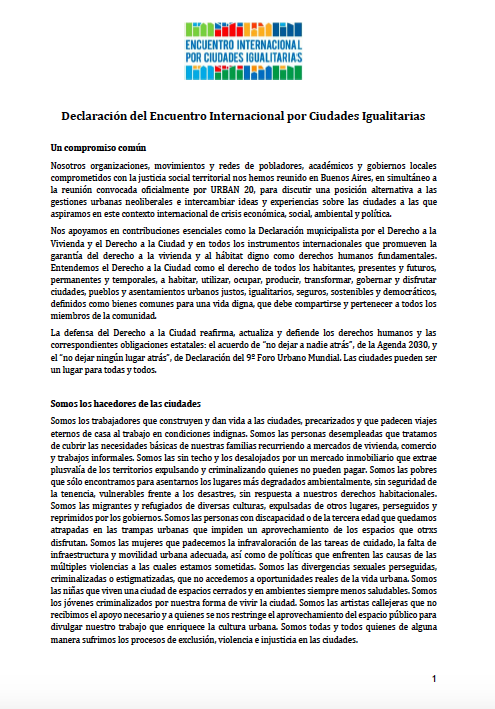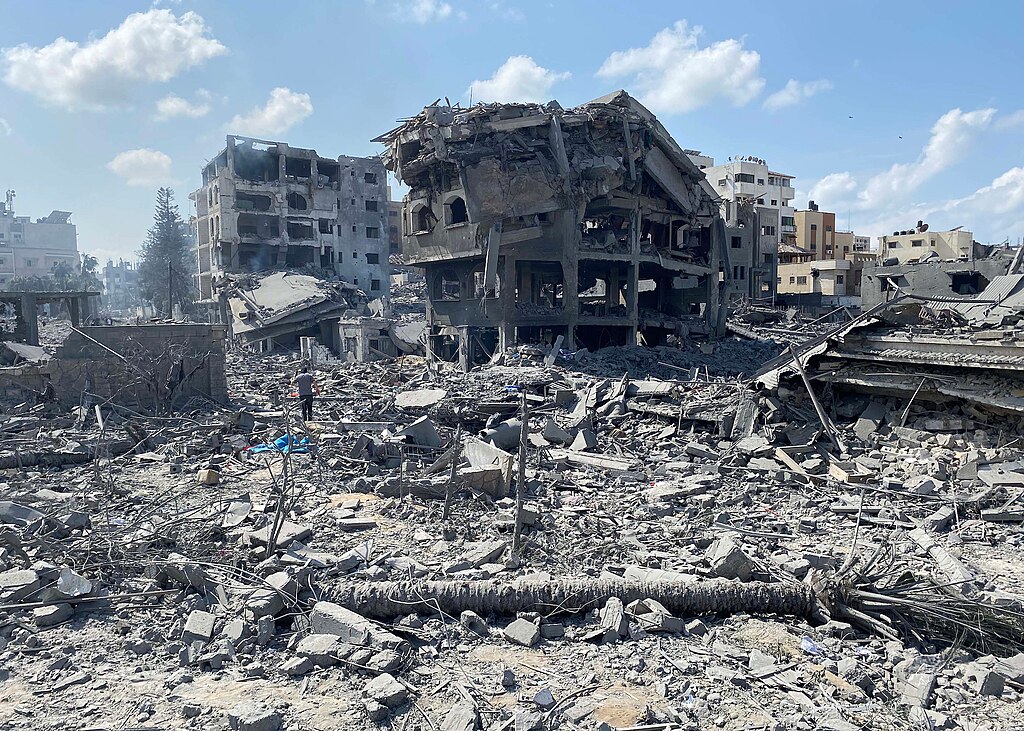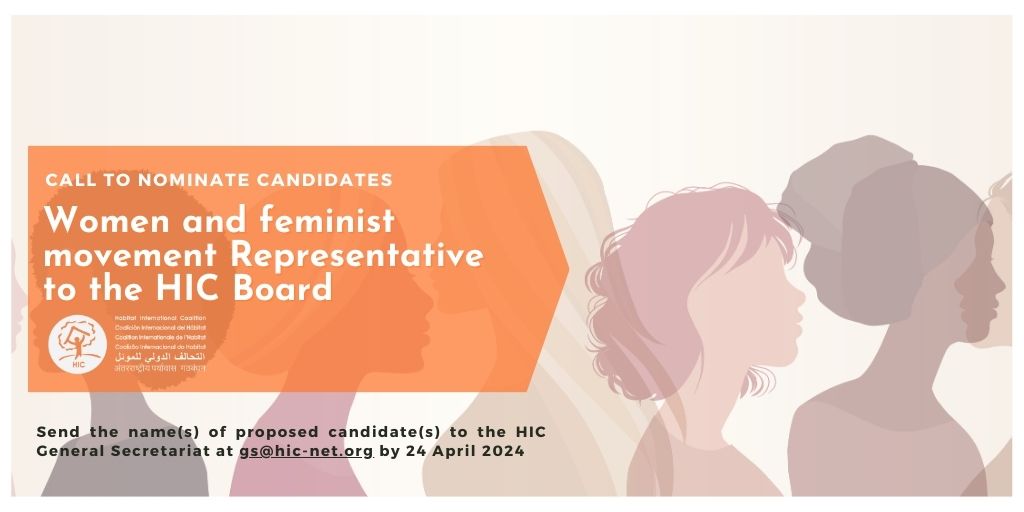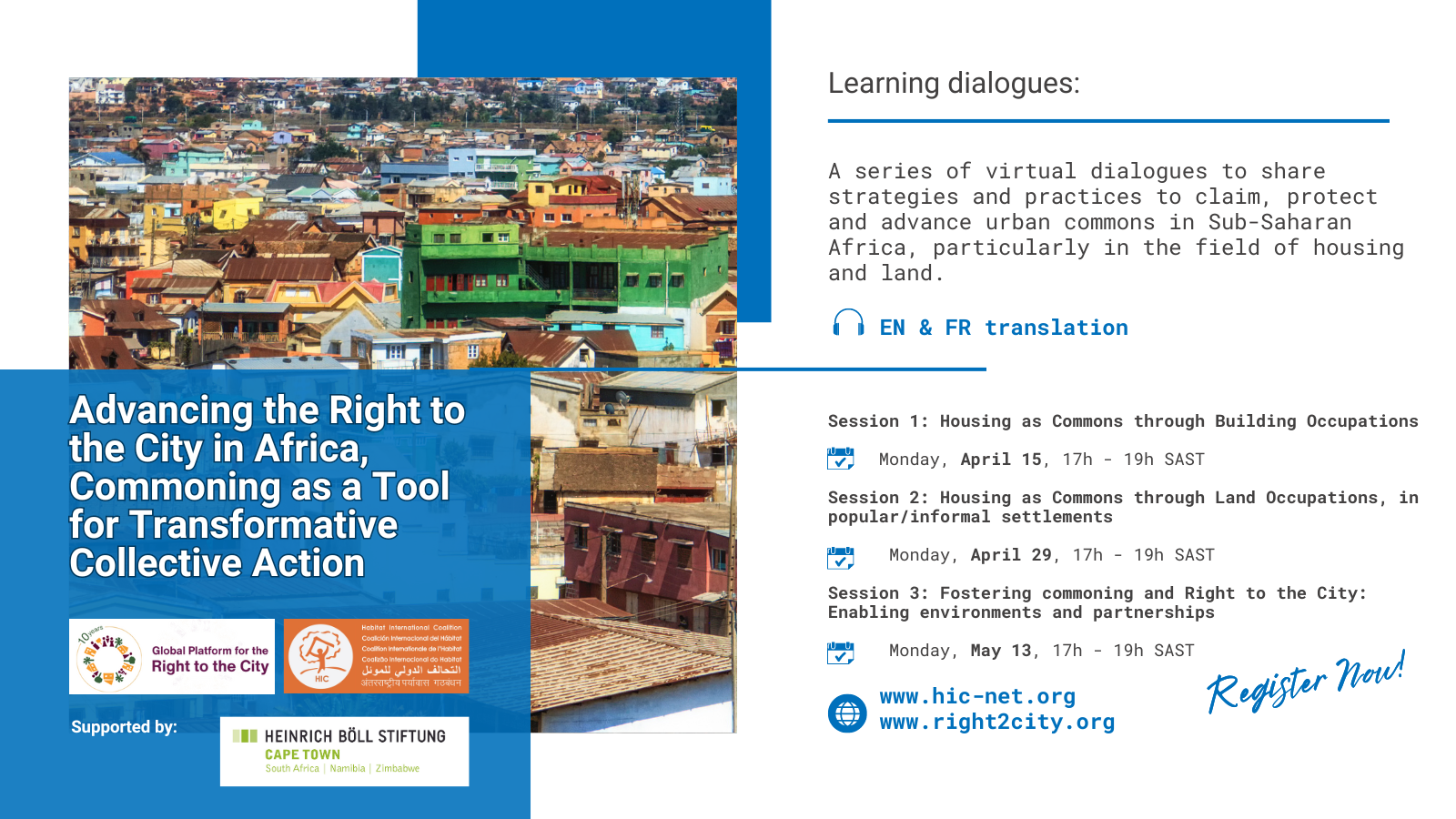Introduction “Home is … a space for sharing, debating, confronting, forgiving and reconciling” Ferdousi Akhter, Bangladesh The Special Rapporteur on adequate housing, Mr Miloon Kothari, has long valued the contribution of civil society organizations to his work. Civil society organizations have assisted in providing information on a wide range of issues, which has strengthened the Special Rapporteur’s reports and findings. Engaging with a wide range of civil society groups has enabled him to access both specific cases of housing rights violations and identify emerging trends and patterns of housing violations. Equally, for civil society organizations, engaging with mechanisms such as Special Rapporteurs has been a useful means of directly raising issues within the United Nations system. When the issues are reflected in the Special Rapporteur’s reports and the UNCHR forum, they become a critical tool and space for advocacy and lobbying at both the national and international levels. In 2005 the Special Rapporteur on Adequate Housing (SRAH) will submit his second report on women and adequate housing to the UNCHR. This report will make an important contribution towards advancing women’s human rights. APWLD, IWRAW-Asia Pacific, COHRE and Habitat International Coalition, believe this report can be utilized most effectively by having women’s groups from Asia Pacific contribute to it. To this end, and in preparation for his 2005 report on women and housing the SRAH, Mr Miloon Kothari, had an Asia regional consultation with civil society groups on 28-31 October 2003. The consultations were held with civil society groups and affected women in Asia on the theme, “Interlink ages between Violence Against Women and Women’s Right to Adequate Housing”. What were the aims of the consultation? The aims of the consultation were two-fold. Firstly, it intended to train participants on the use of Habitat International Coalition – Housing and Land Rights Network’s (HIC-HLRN) Tool Kit with a special emphasis on gender equality and violence against women frameworks. The Tool Kit is used to monitor violations of the right to adequate housing (RAH). Secondly, the consultation aimed to collate testimonies of women’s experiences that highlight the interlink ages between violence against women (VAW) and violations of women’s RAH. Who carne to the consultation? The consultation was organized by APWLD, International Women’s Rights Action Watch – Asia Pacific (IWRAW-AP), Habitat International Coalition – Housing and Land Rights Network (HIC-HLRN), Centre on Housing Rights and Evictions (COHRE), in close cooperation with the Office of the High Commissioner for Human Rights (OHCHR). Approximately 40 participants attended the workshop. There were representatives fromMalaysia, Georgia, Sri Lanka, Thailand, Philippines, Indonesia, India, Nepal, Bangladesh, Bhutan, Hong Kong, Korea, Burma, Mongolia. The participants included migrant domestic workers, victims of domestic violence, fisherfolk, Dalit women, refugees, nomads, indigenous hill tribe women, plantation workers and women working on evictions in urban slums. Also in attendance were representatives from research organizations, human rights commissions, women’s human rights organizations, housing rights organizations and members of APWLD’s Violence Against Women Task Force. What was discussed during the consultation? To meet the dual aims of the consultation, it was divided into two parts: Part I: Pre-Consultation Training (28-29 October) Part II: Consultation (30-31 October) The central purpose of the Pre-Consultation Training was to strengthen work on women’s human rights to housing and land by providing participants the tools and opportunity for advocacy, and to ensure the development and diffusion of professional skills at monitoring violations, constructing effective arguments and posing solutions to problems and violations. The specific objectives were: • To present the methodology for monitoring the human right to housing through practical application of the HLRN (Housing and Land Rights Network) Tool Kit and other conceptual tools, especially the frameworks on gender equality and VAW; • To help participants articulate within the human rights framework cases of discrimination against women in the housing sphere, including multiple discrimination, in relation to poverty and livelihood, land use, property and inheritance issues, globalization, development, fundamentalisms, militarization, and intersectional discrimination; • To help participants share the monitoring and analytical skills and strategic lessons learned by their communities. In the course of the two days training participants were informed of the legal sources of the right to adequate housing in international law, and the specific elements of the right to housing identified both in international human rights law and by the SRAH Participants were then introduced to the HIC-HLRN tool kit and loss matrix, and learnt apply these tools for the purposes of monitoring and advocating on women’s RAH. Critically, participants were also presented with a framework for applying a gender equality and VAW analysis to the right to adequate housing and how to incorporate this analysis when using the tool kit and loss matrix. (See Annex A for the agenda of the pre-consultation training). The specific objectives of the consultation were: • To examine the interlinkages between violence against women (VAW) and women’s Right to Housing (RAH) in order to promote substantive equality for women and thereby inform the normative content of the RAH. • To create a platform to exchange approaches and strategies so as to mutually strengthen women’s groups working on VAW and women’s RAH, for the advancement of women’s human rights. • To provide preliminary findings and recommendations for the report of the UN on adequate housing (SRAH) for 2005 on women and housing, state accountability and strategies for follow-up. • To examine issues of state and non-state actors’ accountability with respect to VAW and women’s RAH. The consultation was divided into five themes, within which participants presented testimonies to a panel of resource persons. The themes were: Within their testimonies participants were requested to: (1) highlight the interlink ages of RAH and VAW in terms of the causes, impacts/consequences, threats, obstacles and strategies; (2) identify points of accountability of state and non-state actors; (3) identify the cross-cutting and intersectional discrimination faced by vulnerable groups; and (4) share positive examples of interventions made by governments or civil society in their country. Based on the issues presented in the testimonies and the responses and discussions that followed, Rea Abada Chiongson, IWRAW-AP and Joseph Schechia, HIC-HLRN, two of the resource persons, summarized the trends, patterns and obstacles identified during the consultations on the interlink ages between VAW and women’s RAH. (See Annex A for the agenda of the consultation.) The consultation concluded with a keynote speech on the correlation between violence against women and women’s right to adequate housing in Afghanistan. It was presented by Dr Sima Samar, of the Afghanistan Human Rights Commission. The findings of the consultation were then shared with members of the public and media who were invited to attend the closing session. What were the main findings of the consultation? Through the examination of the testimonies and analysis undertaken in the discussions, common agreement was reached on some key trends and patterns about the interlink ages between VAW and women’s RAH. These included: • Women continue to live in a culture of fear and insecurity, perpetuated by the impunity of violators and duty holders. Women’s identity and self-determination continues to be denigrated. The lack of a secure place to live aggravates this already serious situation and contributes to increasing violence against women. VAW and women’s RAH are connected in the sense that a violation of one can be a cause and/or contributory factor for the violation of the other. A violation of women’s RAH or an act of VAW can result in a similar effect and impact on women, in terms of deprivation, disadvantage and discrimination against women. A violation of RAH can also be a form of VAW. Conversely, VAW can be a form of violation of RAH. The nature of violence commonly experienced by women, particularly in situations where their RAH is violated, creates an urgent need for the interlinkages to be addressed. The common cause for violations of women’s RAH and for women’s experience of violence is the inferior status of, or subordinate role attributed to, women. Thus, it is important to focus on structural inequalities. The substantive equality and gender discrimination framework propounded by CEDAW can help to recognize and address structural and other forms of violations to RAH and VAW (e.g., addressing systemic discrimination against single women which leads to stereotyping, prevents them from accessing housing, and makes them vulnerable to harassment from landlords). In this regard it is important to ensure that interventions include temporary special measures and creating enabling conditions for women. Applying an intersectional approach, which recognizes discriminatory experiences as a result of gender and other factors (e.g., migrant, caste, class, racial, tribal and nomadic identities, etc.), provides an opportunity for more relevant and comprehensive interventions and for consolidated action among groups working with and among various identities. The international human rights standards and states’ corresponding obligations can be strengthened by integrating the different models of non-discrimination and equality used in the conventions (e.g. CEDAW, CESCR and CERD) and applying the best possible standard. In this best possible standard, women’s rights are not marginalized, overlooked or de-prioritized but reaffirmed, enhanced and strengthened. Working with a wider range of international human rights instruments creates a broader legal base. This can lead to a more rigorous analysis of accountability, contributing to more comprehensive solutions. Additional aspects to the normative content of the RAH, were identified in relation to: § The concept of housing needs to include different forms of accommodation including shelters, detention centers, refugee camps, factory dormitories, where all elements of the RAH must equally apply, including ensuring security of the person from the different types of harassment and violence women suffer. § The element of security, where the predominant use of sexual violence as a tool for oppressing, controlling and silencing women was found to play a significant role in threatening women’s security. Security must include physical, mental, psychosocial and spiritual security, reflecting the different kinds of violence against women. Furthermore, the concept must be based on a life-cycle approach—recognizing how the different forms of violence impact on women’s security from the time they are born until death. § The element of privacy needs to be broadened so it can also be invoked to address other forms of VAW and not just domestic violence. This is especially necessary for addressing structural violence or contexts of violence within which insidious and subtle violations occur (e.g., when husbands are allowed, with impunity, to evict wives from the home for arguing against them, the threat becomes real even for women who are not directly threatened by it because of the knowledge that such practices are accepted and allowed). § The element of access to services needs to explicitly include communications (i.e., phone, internet), which is an essential service for people in the home, particularly in terms of enabling women to have access to public services, health, education, information, and in terms of accessing protection in situations of domestic violence. • Monitoring women’s RAH and VAW and reporting violations are important for advocating the strengthening of the rule of law and improving access to effective remedies. The revised versions of the HIC-HLRN Tool Kit and Loss Matrix are important tools in this respect (e.g., recognizing violators and duty holders separately). • Addressing VAW together with an adequate housing and an economic, social and cultural rights frameworks can assist in surfacing and addressing: • Developing multidisciplinary interventions will provide technical, moral and legal solutions. To do this it is important to work with different groups: activists, lawyers, statisticians, economists, policy analysts, planners, architects, etc. The consultation also raised important questions, which require further research, including: § Analyzing the implications of space and density on domestic violence; § Identifying the factors in housing, land, property and inheritance that could stem the cycles of violence women face; § Systematically collecting empirical data that demonstrates the interlinkages between RAH and VAW, particularly on different vulnerable groups of women; and § Analyzing the impact of states’ reservations on CEDAW on women’s RAH. Finally, the consultation identified practical means by which different sectors of civil society could be strengthened conceptually and methodologically through collective strategizing. Some of the actions participants identified for follow-up included: • Strengthening and further developing the HIC-HLRN tool kit/loss matrix and its application to monitor the interlink ages; • Using international treaties and mechanisms (e.g. Special Rapporteurs) more strategically to ensure accountability and reduce impunity of violators; • Increasing cooperation and solidarity between women’s groups working on VAW and RAH; • Sharing positive strategies for addressing violations of women’s human rights; • Applying the normative framework of RAH to allow for preventive approaches to pre-empt violations linked to VAW and RAH; • Advocating for the ‘right not to be evicted’; • Law reform and implementation, including ensuring domestic violence legislation addresses women’s rights to housing beyond access to shelters; • Training of judiciary, lawyers and police on gender awareness, women’s rights RAH and VAW; • State regulation of private actors (e.g. companies, religious institutions, employers of domestic workers); • Reporting to national institutions; • Social mobilization/awareness raising; • Responding to the SRAH’s questionnaire. What is covered in this report? This report is not intended to be a detailed and comprehensive record of these consultations but rather a concise summary of the key issues, findings and strategies that emerged from the consultations. To this end, this report will briefly explain the SRAH’s mandate and work to date. The report then outlines the frameworks within which the discussions on the interlink ages between VAW and the RAH took place, i.e., the RAH framework, VAW framework and non-discrimination and substantive equality framework. The report will also summarize the testimonies presented, and highlight the patterns, trends, obstacles and strategies identified for addressing the interlink ages between VAW and the RAH. There are several useful documents annexed to the report, including the agenda of the consultations, the tool kit and loss matrix models, examples of how the groups applied the tool kit to specific situations, the testimonies in full, individual interviews with participants and a summary of the responses to the consultation’s evaluation form.
Declaración del Encuentro Internacional por Ciudades Igualitarias
En el marco del U20, organizaciones sociales, movimientos populares, redes de la sociedad civil, integrantes de la academia y autoridades locales comprometidas con la igualdad, los derechos humanos y la sustentabilidad se reunieron en Buenos Aires para proponer un compromiso común por Ciudades Igualitarias.




